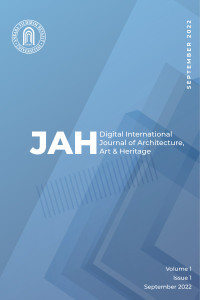Reconstruction through memory building and re-functioning buildings with public access
Reconstruction through memory building and re-functioning buildings with public access
___
- Amy, D. Dave, M. (2013, April 02). New Old Town. 99% Invisible. https://99percentinvisible.org/?s=72. The Editors of Encyclopaedia Britannica. (n.d.). Fatwa. Britannica. Retrieved August 15, 2023, from https://www.britannica.com/topic/fatwa
- Emanuele, M., Salah. H.I. (2019). Post War/Disaster Recovery of Historical Cities and Cultural Heritage Sites. AYBU- Ankara Yildirim beyazit University, Master of Post War / Disaster Reconstruction and Rehabilitation.
- Jwanah, Q. (2017). Rebuilding Old Aleppo Postwar Sustainable Recovery and Urban Refugee Resettlement. (31-69 33rd st, Queens, NY, 11106.) Master of Urban Planning Candidate. Academia https://www.academia.edu/26963608/Rebuilding_Old_Aleppo_Postwar_Sustainable_Recovery_and_Urban_Refugee_Resettlement
- Lamia, AL.J. (2008). The Role of Mysticism in the City of Aleppo. Aleppo.
- Matthew, C. (2010, June/August). Imaginative mislocation; Hiroshima’s Genbaku Dome, ground zero of the twentieth century. Radical Philosophy 162. Matthew Charles · Imaginative mislocation: Hiroshima’s Genbaku Dome, ground zero of the twentieth century (2010) (radicalphilosophy.com)
- Najwa, O. (2009) Archeology and Historical Monuments in Aleppo, Kilis and Gaziantep. Aleppo University.
- PatrIzıa, Q. (2018, Nov 28). House Broglia, Hospicium Signi Coronae. TorinoXL History and Stories of Turin. https://www.torinoxl.com/casa-broglia-hospicium-signi-coronae/
- Robert, G.T. (2008, Winter). Authenticity and the Post-Conflict Reconstruction of Historic Sites (1). The Journal of Heritage Stewardship.Authenticity and the Post-Conflict Reconstruction of Historic Sites (nps.gov) Shawqi, sh. (1991) Aleppo History and Historical Monuments, Aleppo.
- UNESCO. (2019). Five years of Conflict: The State of Cultural Heritage in the Ancient City of Aleppo. UNESCO Press.
- Yasser, A. (2019, 01, 01). Hama City How it was and how it became (Al-Kilani neighborhood). Yasser Arwani’s Blog, https://yaser-arwani.com
- URL-1. Koch/ Rahim M. Koç Müzeleri (2016). Rahim M. Koç Müzeleri, http://www.rmk-museum.org.tr/ankara/en/home-page
- URL-2. Max, O. / the German Archaeological Institute (DAI) and the Archaeological Institute of the University of Cologne (1995). Reisen 1911-1939.Aleppo - Tell Halaf - Gharra 1929 Bd.18.IdAl Objects. Retrieved (1860-1946) iDAI.Objects / Arachne (dainst.org).
- Başlangıç: 2022
- Yayıncı: Ankara Yıldırım Beyazıt Üniversitesi
Mapping and Analysis of Literature on Spatial Legibility Research in Scopus Database (1981-2023)
Reconstruction through memory building and re-functioning buildings with public access
The Effects of Traditional Architecture on Modern Housing: Examples of Cansever, Bektaş and İzgi
Türkan HARMANBAŞI, Zafer SAGDIC, Serhat ANIKTAR
